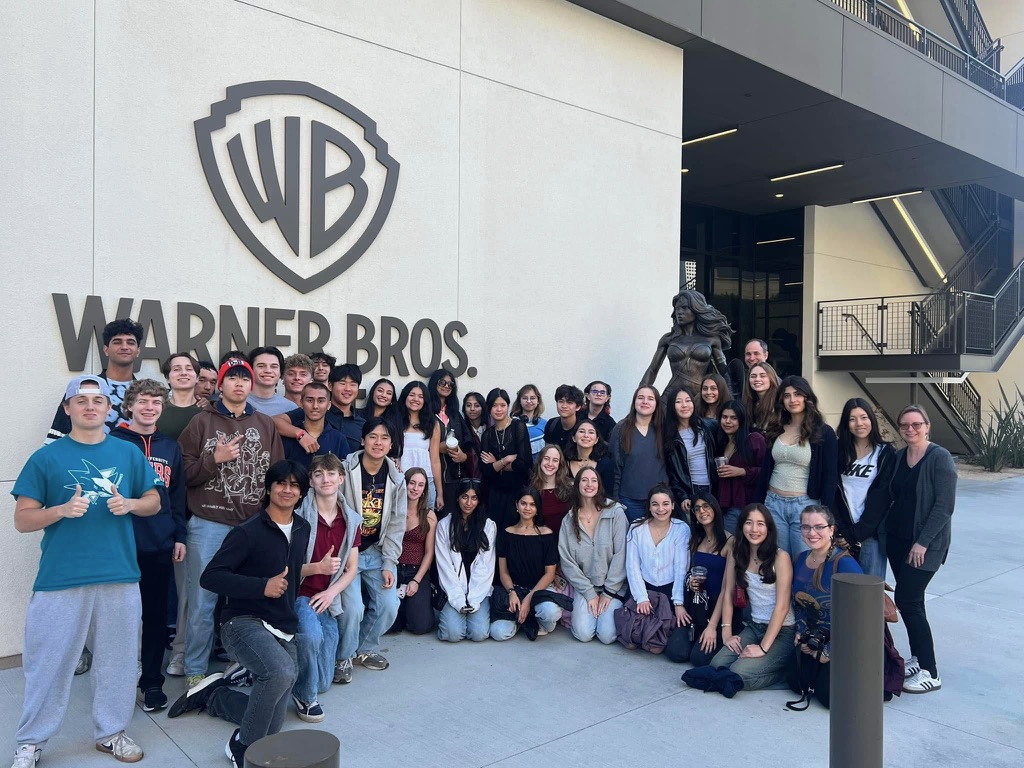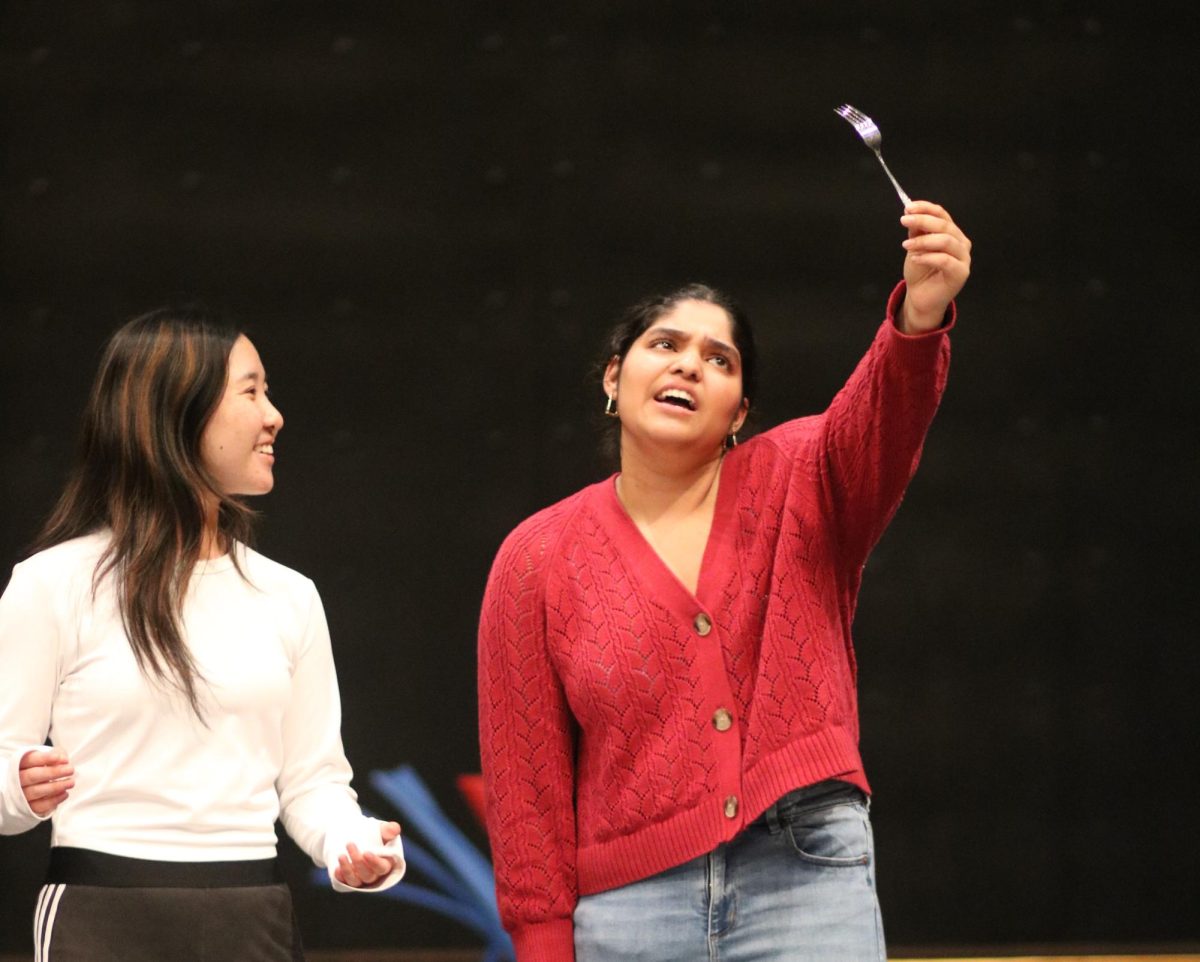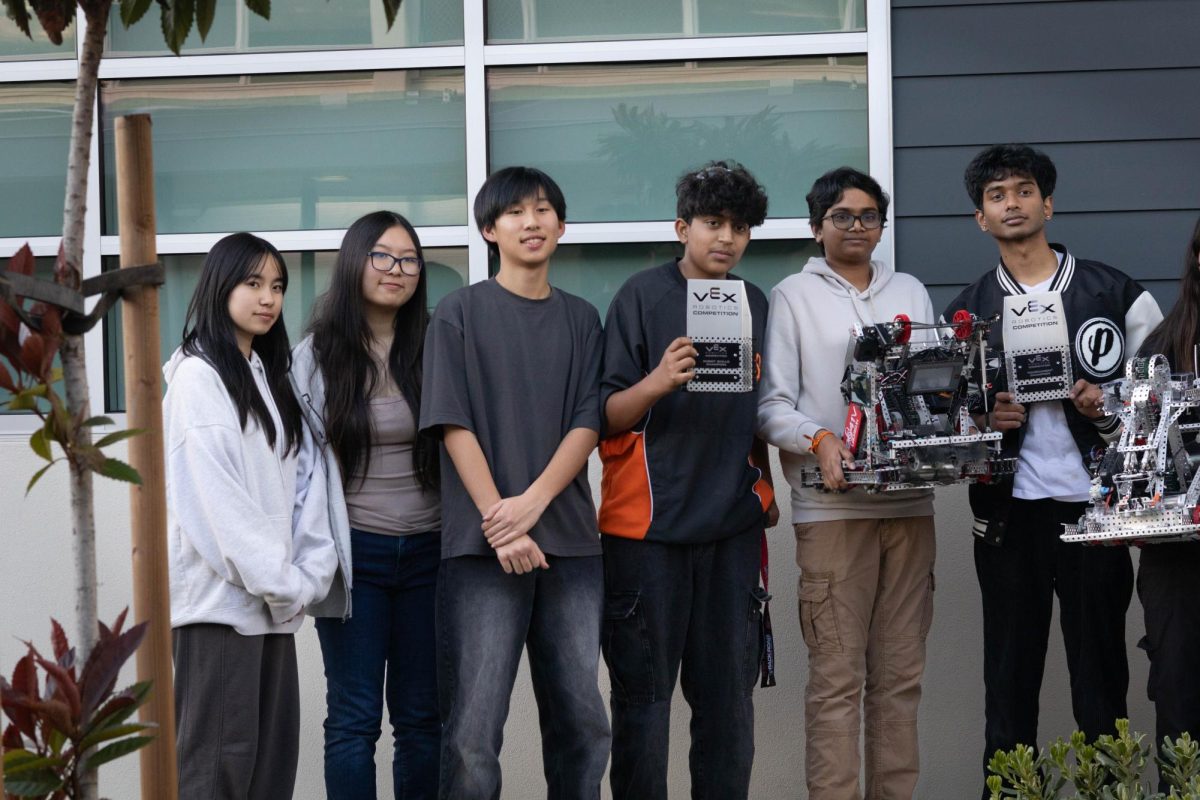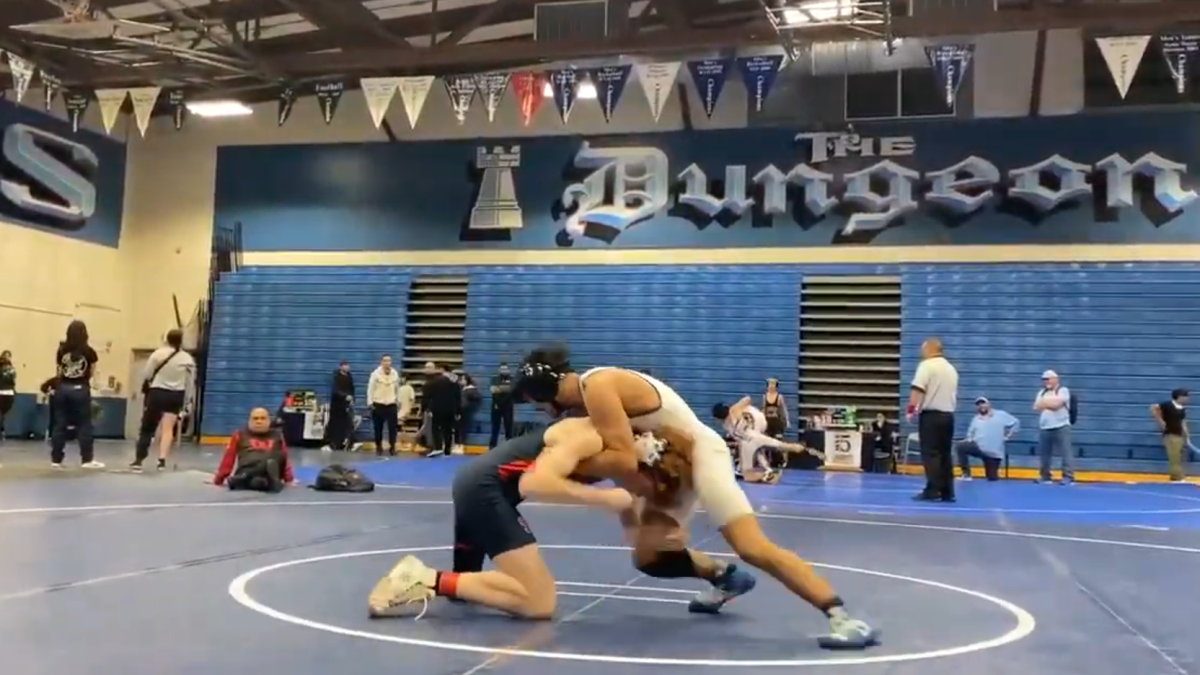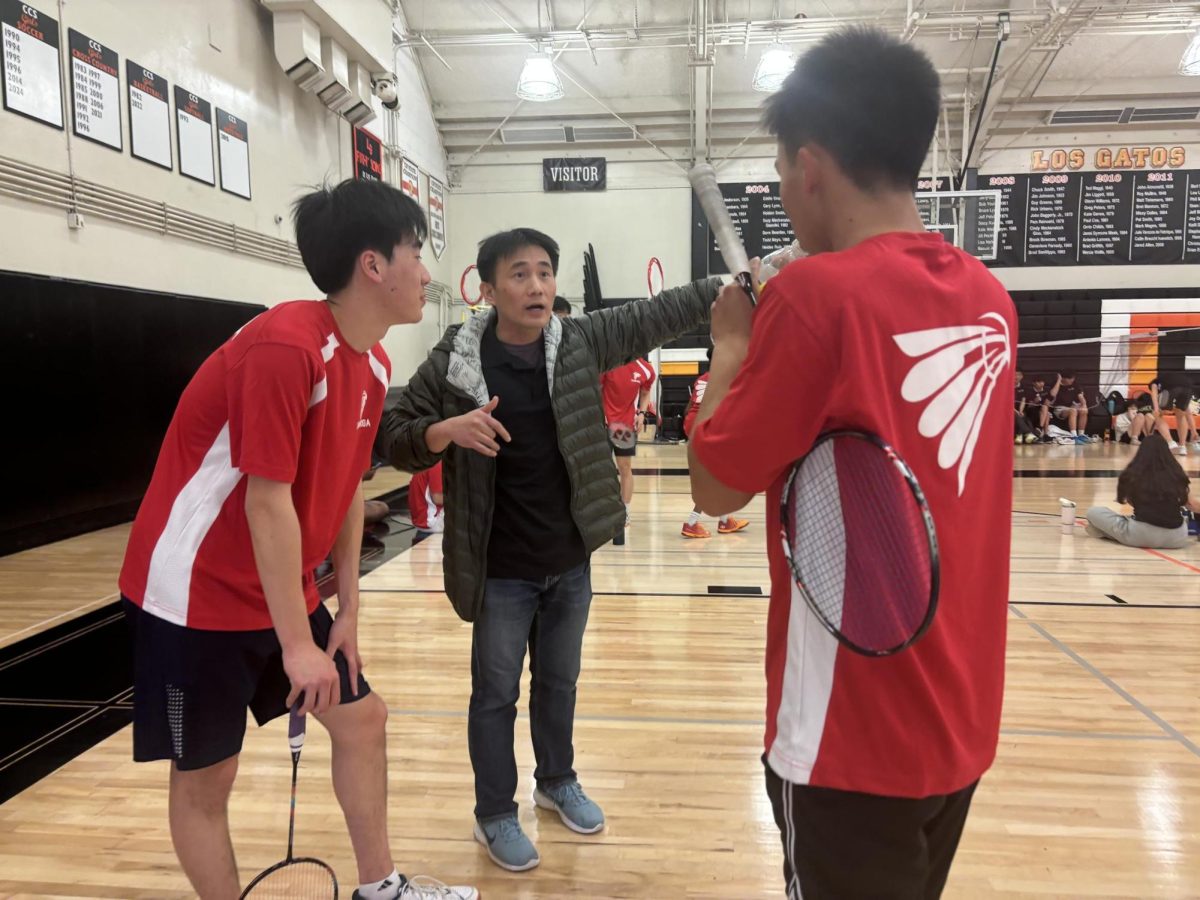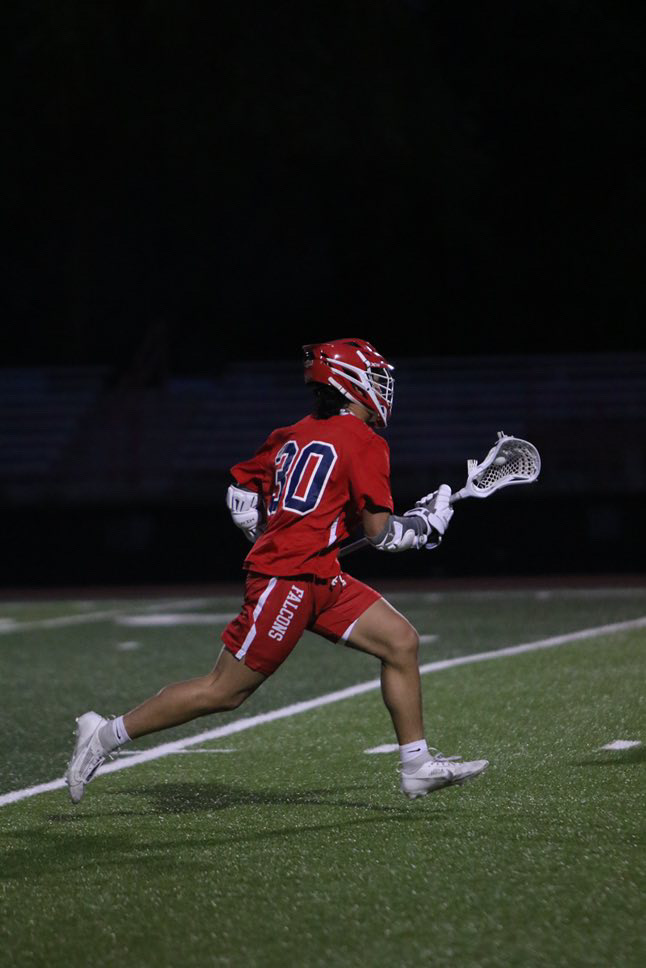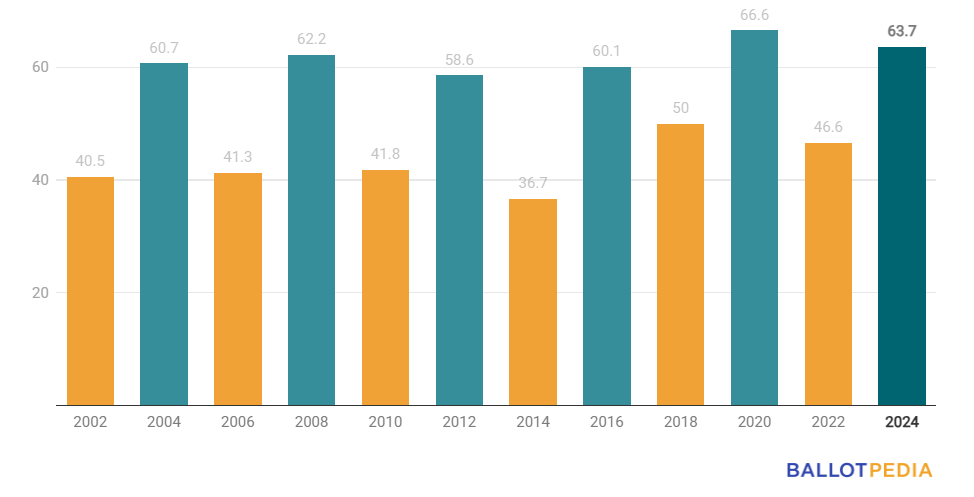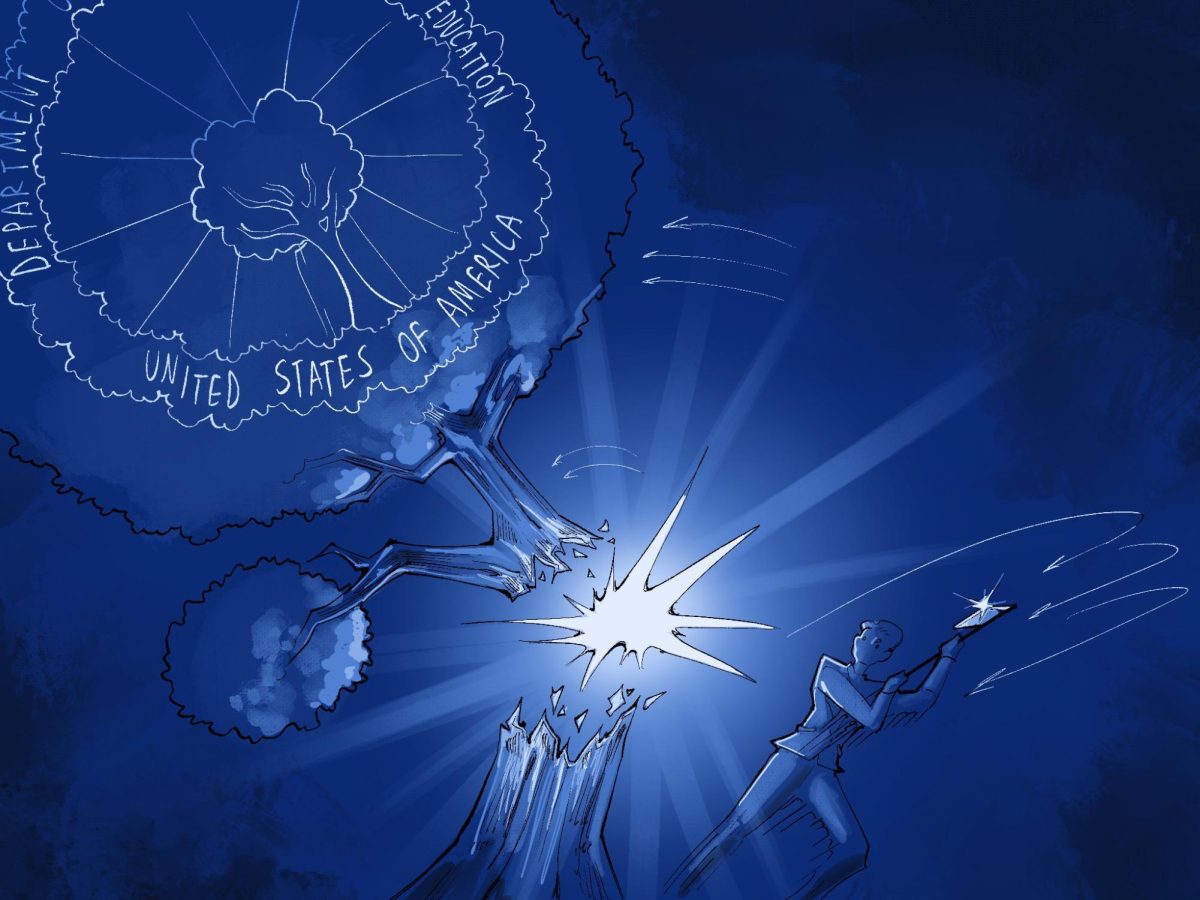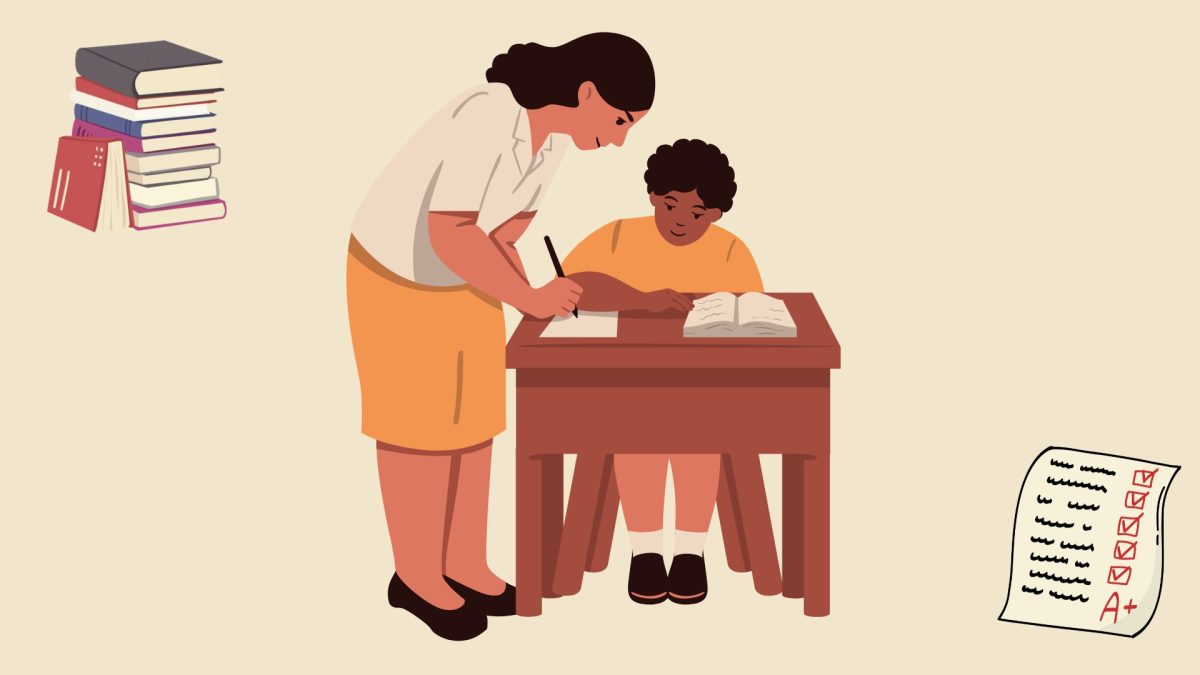When junior William Zhao first arrived in the U.S., he was shocked at the abundance of sports facilities. The athletic environment in the U.S. is drastically different from the environment in China, where such facilities are few and far between.
“There are no such things as gyms in China. The idea of going to a gym or workout isn’t even prevalent there,” Zhao said.
In China, Zhao was an exceptionally talented athlete. In golf, he placed seventh in the Buick Open on the PGA Tour China; years earlier his team placed fourth in the nation in tee ball. But after moving to the U.S. in 2016, Zhao discovered his skills are far more common here.
The highly competitive sports culture in the U.S., where U.S. athletes win 15% of all Olympic medals, produces hundreds of thousands of talented young athletes each year. This strong athletic performance is coupled with an unusually strong public adoration and support for sports: The U.S. accounts for 32% of the global market share for sports apparel, equipment and bikes — over double that of the UK and 11 times that of China per capita.
China promotes academic and athletic excellence, yet lacks student athletes
Zhao, who attended an international school in Zhengzhou, Henan, province, attributed much of his early athletic success to his parents, who introduced him to many sports — golf, basketball, soccer, badminton and tennis — at a young age and pushed him to challenge his limits.
However, Zhao’s case is rare. He saw people in China tending to focus on either sports or academics rather than trying to balance different interests and activities.
“If I told someone in China, ‘I’m the team captain for basketball,’ they’re going to think, ‘He’s probably not academically inclined.’ It’s a common perspective,” Zhao said.
When Zhao moved to the U.S., he was surprised by the lack of stigmas against student athletes at the school and the vital role sports play in socializing.
“When I came to America, sports really helped me make my first friends,” Zhao said. “Being on the basketball team has taught me skills like teamwork, work ethic and inclusiveness — life lessons that can be applied throughout your life. I didn’t see that so much in China.”
He attributed this in part to the extensive sports pathway in the U.S., with opportunities much more readily available at every age, more systematic and professional coaching and a “more holistic approach to education.”
He also noted a clear difference in the options available to students at the high school level. According to Zhao, even though many Chinese high schools had sports teams, they were usually recreational. Additionally, there were no designated varsity or JV teams.
This lack of an organized system for sports is also apparent on a broader scale.
“In China, there isn’t a developed system of sports, like Amateur Athletic Union (AAU) clubs, where you can go to showcase your skill, which I think is a huge drawback for someone interested in taking their basketball career to college or even pro level,” Zhao said.
The Chinese system is also highly inflexible, Zhao said. Instead of combining academics and sports, talented young athletes sometimes go to demanding sports-specific boarding schools starting from as young as 6, with the hopes of molding a future Olympic gold medalist or the equivalent. This usually means that athletes receive only a minimal education, leaving many out of options when they retire.
“There’s no such thing as a ‘student athlete’ in China. If you were an athlete, you were going pro,” Zhao said.
For example, according to NPR, national skiing champion Zhao Yonghua is now bedridden, unable to afford proper treatment, and had to resort to selling her medals after being forced to retire due to diabetes. Marathon runner Guo Ping was beaten by her coach with a whip or baton in training and forced to retire at 26 with only an elementary school education and sports injuries, according to the Los Angeles Times.
These examples are only a couple from hundreds of athletes in similar situations, a trend prevalent throughout China’s sports industry.
NPR estimates that of the country’s 300,000 retired athletes, 80% are jobless, injured or impoverished. Recognizing the scope of this problem, the Chinese government in 2007 decided to dedicate $4 million annually to welfare and vocational training for former professional athletes.
Some Chinese athletic associations, especially at the college level, have started to emulate the U.S.’s approach to training athletes. According to Asia Society, many Chinese coaches and administrators from Chinese universities have visited Pac-12 (a collegiate athletic conference) schools in the U.S. to learn about how they integrate athletics and academics into their school culture and produce athletes that are both academically and athletically well rounded.
Despite the current differences in academic-athletic life balance between these two countries, Zhao noted that, remarkably, the sports fan bases between the countries were fairly similar in size.
While American football is the most popular sport to follow in the U.S., its counterpart in China is basketball. A survey conducted in 2016 reported that 40% of Chinese respondents were most interested in basketball, compared to a similar 37% for football in the U.S. But, interestingly, Chinese people tended to be more interested in American sports leagues.
“In China, the fans might even be more enthusiastic than American fans,” he said. “Many of them would have NBA players as role models and wear their jerseys. They are inspired by them a lot. They follow the NBA (National Basketball Association) more than the CBA (Chinese Basketball Association).”
Despite China’s gradual reform of sports training and organization, Zhao expressed a preference for American sports culture due to its generally more relaxed nature and increased opportunities for the general public.
“I’m in the fitness club and am interested in working out and exercising,” Zhao said. “I’m pretty hooked on this workout culture, and it’s definitely good for your mental health and better overall.”
Germany emphasizes individualism, even in its two most popular team sports
After spending her first few years in India, senior Ayushi Chakraborty moved to Germany at age 10, attending the Frankfurt International School for four years. In Germany, she also saw little evidence of a true commitment to student athletes
“In Germany, if people did sports, they focused on that instead of academics because that was a really secure way for your future,” Chakraborty said. “Here [in the U.S.], it’s a mix of academics and sports.”
According to German Way, the typical German school is primarily focused on academics, with competitive inter-school sporting events being rare. If a student chose to do athletics, the sport was usually done outside of school as part of a sports club. However, the introduction of schools specializing in athletic training in the past couple decades has allowed a venue for aspiring athletes. These Sportschule schools provide training for students in various sports while also preparing students academically. Among schools, there is also a certification system for those that prepare athletes especially well with high academic standards and expert coaching; these schools are considered “elite” sports schools.
Additionally, many sports schools are partnered with Olympic Training Centers, which further prepare top athletes for the Olympics.
The ramifications of these schools are already apparent; as many as 30-60% of German Olympic medal winners and participants are alumni of elite sports schools. For example, both Robert Harting, the gold medalist for men’s discus in London in 2012, and Britta Steffen, gold medalist in the 50-meter women’s freestyle in Beijing in 2008, attended the Schulund Leistungssportzentrum Berlin (SLZB) in Berlin.
Chakraborty also pointed out several notable differences in the structure of high school sports in the two countries. In particular, she said German students tend to focus more on the sports themselves, while American students tend to value sports for the hype and culture surrounding them.
“In the international school that I went to, we didn’t have as many school games that everyone went to, whereas here a lot of people come to watch,” Chakraborty said.
She attributed this lack of team-building in Germany to the highly individualistic nature of German sports. Athletes generally focused on their individual skills and techniques, making the team dynamic more competitive.
Moreover, the value of individual team members were raised by a focus on only a few sports, primarily soccer and basketball.
“People in Germany take soccer really seriously,” Chakraborty said. “Here people take American football seriously, but there’s more of a group community and closeness between team members. It’s more about school spirit as well, but in Germany there weren’t as many school clubs and school teams.”
She also noted the gender divide within athletics at Saratoga. According to Chakraborty, due to both boys’ and girls’ focus on a few sports like soccer and basketball in Germany, the school was able to maintain large teams and high-quality facilities for each. By contrast, the large variety of teams at a school like Saratoga High results in much less focus on each individual sport. She noted football in particular, which receives the most funding as an all-boys team without a female counterpart.
However, the culture surrounding certain sports, specifically soccer, is very similar to the U.S.’s, Chakraborty said. In Germany, soccer trading cards, like baseball cards in the U.S., were common collection items for fans.
“Whenever you bought something in grocery stores during soccer season, they would give you cards of different players,” Chakraborty said. “I know a lot of guys, like my cousin in Germany, have a whole book of cards of players.”
India focuses heavily on academics but supports huge cricket culture
Senior Kavya Narayan spent her first seven years of her life at a private school in Bangalore, India, where she said that opportunities to play sports were extremely limited — both in and out of school.
“We didn’t have any P.E. classes or anything of the sort,” Narayan said. “It was just that, once a month, we would have a marching class, where everyone got in a circle and marched around.”
Narayan said that this overall lack of athleticism in schools resulted from an overemphasis on academics. Sports were exclusively viewed as extracurricular activities that most people would not pursue seriously. In fact, a focus on academics is ingrained in Indian culture; one Hindi saying roughly translates to, “You will be a King if you read and write, and be spoilt if you play games” (Padhoge, likhoge, banoge nawab; kheloge, kudoge, hoge kharab).
“We have the Saratoga culture here, where all the focus is on STEM and academics,” Narayan said. “India is that but stronger.”
According to Narayan, college recruitment for sports was extremely limited. Even the opportunities offered to athletes only offer a basic minimum standard of living, CNBC reported, but the system is rampant with political corruption and interference.
Given the lack of available resources, competing professionally requires extreme individual commitment.
“If you want to play sports, it’s an on-the-side activity. It’s not at all something that you would pursue or get recruited for,” Narayan said. “If you want to go into the professional leagues, you just have to work your own way up.”
This lack of importance placed on sports is especially apparent in the facilities available in Indian schools. She said her school had no sports facilities and equipment. For marching days, students would perform on a barren dirt field.
The lack of athletic resources was not limited to schools. Narayan also said that, in general, recreational soccer was usually played on a dirt field with old soccer balls.
According to a report by the Associated Chambers of Commerce and Industry of India (ASSOCHAM), a non-governmental advocacy group, and PricewaterhouseCoopers Private Limited (PWC), a multinational group of firms, in March of 2019, the country’s sports facilities required much-needed reform, both for economic stimulation and international athletic performance. Although there are many preexisting athletic facilities, most are neglected and unmaintained because they are solely used for competition and games from the international to district level; they are not accessible to the public.
This phenomenon has resulted in fewer organized sports teams; rather, residents tended to play recreationally, forming teams within their local communities. For instance, sports brackets within apartment complexes were common, Narayan said.
This emphasis on recreational sports has resulted in weak performances on an international level. Since 1980, India has only won three gold medals at the Olympics and 35 medals total since 1900. In comparison, Michael Phelps alone has 28 Olympic medals in total over a span of 16 years.
The Indian government has taken steps to try to improve the athletic climate in the country in recent years. In early 2016, the Indian parliament introduced a National Sports Ethics Commission Bill in hopes of trying to improve the integrity of Indian sporting culture.
At the same time, their poor performance at the Olympics comes from a focus on sports, such as cricket that haven’t been played in the Olympics. According to Narayan, sports followings for cricket are much larger and stronger in India compared to followings for sports like basketball or football in the U.S. According to a study by the International Cricket Council, India constitutes over 90% of the world’s cricket fanbase.
“Cricket was like a religion for so many families in my apartment complex — when India lost a cricket match that day, they would literally mourn it like it’s a funeral,” Narayan said.
Japan fosters extensive sports participation in schools
Senior Taiki Fujigami moved to Tokyo in the summer before seventh grade after growing up in Saratoga and attending both Foothill Elementary School and Redwood Middle School. He currently attends Mita International School.
Since moving to Japan, Fujigami has noticed a visibly higher degree of sports participation both among the student body and in general compared to those in the US. At his school, roughly 60-70% of boys and 50% of girls are involved in some sports club by the time they graduate, compared to about 36% in Saratoga.
Along with participating in athletics, many Japanese students simultaneously prioritize their academics. In fact, according to Fujigami, bunbu ryodo (balancing both sports and studying) is becoming more popular in Japanese culture.
“Students just cut everything off as much as possible to secure time for both sports and studying,” Fujigami said. “There’s not much entertainment or anything else that students can really immerse themselves in, so there’s more time and effort devoted to those sport clubs.”
According to the Stanford Program on International and Cross-cultural Education (SPICE), extracurricular clubs in Japan resemble U.S. patterns, with two hour meetings every day after school, with added meetings over school breaks. Students are encouraged to join clubs every school year, contributing to the high rate of participation among sports clubs in Japan, although they are mostly limited to only one club because of school policy. However, since the vast majority of students participate in sports solely through their school’s clubs, which are not differentiated between varsity and junior varsity teams, the caliber of athletes is generally lower than those of their U.S. counterparts, according to Fujigami.
Before moving to Japan, Fujigami was involved in karate, swimming and soccer. Since moving to Japan, he has been a member of Mita’s middle and high school basketball club for five years. Their club competes with other schools in the Setagaya province, a subdivision of the Tokyo tournament that determines qualification for the Nationals. Boys’ and girls’ basketball are one of the few sports that Mita emphasizes, alongside boys’ soccer, girls’ pop dance and boys’ and girls’ tennis.
“My school has other non-sports clubs such as debate, tea and general science, but they definitely receive less attention than sports clubs do,” Fujigami said.
Despite the focus on in-school activities and the high number of students involved in sports, Fujigami thinks the Japanese sports culture is fairly weak.
“The school isn’t super competitive athletically, so none of our sports teams are that strong,” Fujigami said. “The turnout at basketball games is pretty low except when it’s important. People would come if you ask them to come, but the culture is generally pretty weak. It’s mostly just the players’ parents and sometimes friends.”
Fujigami attributed his school’s lack of sports culture primarily to the lack of space in urban schools — Mita does not have enough land area to support all of its sports teams. It’s only open area dedicated to sports is the “ground,” a patch of dry soil where the soccer and rugby clubs play. Several other clubs, such as swimming and tennis, do not have any on-campus facilities and must practice and compete in local offsite pools and courts.
“The gym is definitely not as big as the ones in the U.S.,” Fujigami said. “Since there’s not enough space for a lot of things, clubs have to avoid overlapping practice schedules with other clubs. Some days, the basketball team can actually use the full gymnasium, but other days there’s volleyball and badminton clubs using the other hall.”
Fujigami said that another significant factor of the lackluster sports culture is the structure of school sports, starting with the coaches themselves. While larger sports clubs like soccer hire outside coaches, others, including basketball, instead rely on teacher supervisors with past experience in the sport.
This lack of sports culture is not limited to the high school level. According to the Los Angeles Times, many elite athletes who want to become professionals attend smaller, more specialized colleges that train students for specific sports, but with the trade-off of a less rounded education. Additionally, the lack of support for athletics in high schools results in a more conservative college sports culture, where it is rare to see people openly supporting teams through apparel, game day attendance, etc.
Other factors, such as an inability to host games on campus, complete control of athletic events by the Japanese Association of Athletic Federations and a precedent for college teams to function without any involvement from the university, also contribute to the lack of widespread sports culture.
“Some schools recruit, but only the very best athletes are able to secure these spots,” Fujigami said. “It’s probably harder to get into universities based on sports. The only person I know who’s applying through sports is one of my friends who plays tennis on a global level.”
But the sports culture is gradually evolving, Fujigami said. For instance, the first boom in basketball’s popularity occurred in the 1990s with the basketball Manga series “Slam Dunk.” And since Japanese-born Washington Wizards player Rui Hachimura and Toronto Raptors player Yuta Watanabe were drafted to the NBA, Japanese basketball culture has grown significantly in the past 20 years, NBC and The New York Times reported.
Fujigami said the Japanese sports culture will only grow in the years to come. According to him, sports viewership has increased greatly because of the increased popularity in streaming and watching sports.
“In the future getting access to sporting events will be much easier,” Fujigami said. “Especially in rural areas, more people will become involved with sports — whether playing, watching or following — which would economically benefit Japan and bring joy to the lives of the Japanese people.”
England’s compulsory sports system increases competition
Senior Peilin Zhang grew up in England, where she attended an all-girls school until she moved to the U.S. in her freshman year. In England, she played netball, a primarily women-dominated sport and hybrid between basketball and ultimate frisbee, and participated in dance outside of school.
Zhang’s school, like Chakraborty’s, also only supported a few sports teams and focused on the individual nature of sports, while similarly putting an overall emphasis on academics. Because it is required in the UK for students ages 4 to 16 to participate in sports for one to two hours a week, there is less importance placed on it. As a result, there are also fewer courts and fields, and after-school time with coaches is very limited.
“England was a lot more academic because the sports that I had to do were compulsory,” Zhang said. “Here, there’s a lot more opportunities like clubs and teams, whereas there it was just academics.”
Despite the required baseline for athletic participation, Zhang said English students, on average, tended to spend less time participating in sports than their American counterparts. Zhang herself spent around four hours per week participating in sports in England, compared to the over 10 to 15 hours she put into dance in the U.S.
Additionally, she also noted the more supportive nature of sports in the U.S. In the U.K., sports games typically have only family members or close friends attend, while games here saw a much larger variety of attendees. She observed this phenomenon first hand as a member of her school’s dance team in each country.
“My experience on the dance team was really fun and it was more community-based, whereas I think it was more competitive in the UK because the competitions tended to be smaller and solo,” Zhang said.
Zhang was surprised by the U.S.’s well-developed pathway for prospective college student-athletes.
“When I moved here, I was very surprised to hear that there were scholarships offered [for sports],” Zhang said. “Anything outside of merit scholarships in England was unheard of. I think it’s a really great opportunity that American colleges value sports culture and athletes’ dedication.”
U.S. sports culture contributes to well-rounded development
Sports are deeply embedded in American culture — both in and out of schools; however, American students are lagging behind countries that emphasize academics: the 2018 Programme for International Student Assessment (PISA), an exam administered worldwide to 15-year-olds by the Organization for Economic Cooperation and Development (OECD), revealed that the U.S. had placed 13th in reading, 18th in science and 37th in mathematics among the 79 participating countries.
By contrast, China ranked first in all three categories, while only around 23% of youth participated in organized sport activity, according to a 2018 study, compared to 71.8% of youth in the U.S., according to the Aspen Institute. Singapore, which is ranked second across all three categories, also boasts a more academic-driven society.
This stands in stark opposition to the performance of countries like Japan, which simultaneously facilitates high sport participation and promotes strong academic performance (overall rank 6 on the PISA) and, not coincidentally, has among the highest average lifespans. 60% of the Japanese adult population engage in sports on a weekly basis, compared to 23% in the U.S.
This disparity was especially apparent throughout the COVID-19 pandemic. Japanese sports participation generally increased over the past two years, due in part to their health ministry’s Fun+Walk project to promote daily physical activity for people of all ages. On the other hand, Americans of all ages tended to lead more sedentary lifestyles: 28% of kids have lost interest in organized sports, and obesity rates among children have increased from 19% to 22%.
With American sports spending per high school athlete exceeding spending on math, science and English per high school student, many are concerned that the focus on sports goes too far. But research has shown that, in general, sports participation is extremely valuable in promoting human development — even if it detracts from educational time.
According to the United Nations Educational, Scientific and Cultural Organization (UNESCO), sports can teach values ranging from fairness and teambuilding to inclusion and respect. Additionally, an avid sports culture allows for more physically active youth, which in turn leads to both physical health benefits like reduced risk of obesity and improved coordination, and mental health benefits like increased confidence.
Aspen Institute quantified the benefits of youth sports: athletes are one-tenth as likely to be obese, have lower rates of depression and make 7-8% higher annual earnings. Surprisingly, however, these benefits also spill over to academics: according to their report, athletes can perform up to 40% higher on tests and are 15% more likely to go to college.
For many American students, however, the primary benefit of athlete and spectator participation is in the bonds formed between all members of the community.
“I think it’s really cool that people are really passionate and are really invested in their sport,” Narayan said. “It really helps build communities and helps form connections in other ways, and I think that’s one of the best parts about sports.”


